
A treatise on a fleeting glimpse…
7 November 2021
Nine of us met in the rain at Duck Hollow on 31 October 2021 but it has taken me a week to write about it because I think we saw a very rare bird and we have no photo. (Bird photos in this article are from Wikimedia Commons.)
What did we see on Halloween? Here’s the story.
Around 8:50am a small Bonaparte’s size gull flew downriver and gave us long looks as it swept back and forth and upwards to fly over the Homestead Gray’s Bridge. We got long looks at its upper wing pattern, back, head and tail, but especially the upper wings. It did not fit any typical gull species. I had two thoughts: (1) It looked like an impossibly rare Sabine’s gull (2) but I’d expect a Bonaparte’s gull. What was it?
I polled the group and wrote down our descriptions on the spot. I looked at my Sibley app to compare Sabine’s and Bonaparte’s. KX Emm brought out a field guide and did the same. Later that day, still undecided, I sent the description below to three expert birders for a second opinion. Mike Fialkovich responded that an M would indicate Bonaparte’s. But a week later I am still struck by the parts of my description in boldface. A thin M would indeed be a Bonaparte’s. But would a fat M be a Sabine’s?
“The primaries were sharp black (no fuzzy edges). The leading edge of the wings was black [/dark] too. Trailing edge was a pure white triangle with nothing to break the whiteness & no trailing black edge on the wings. The white was stark. The black was like a fat M. There were no fuzzy borders on the black & white.
Its back looked gray to me.
The head/face was white with a dark eye and maybe a dark ear spot (not sure about ear).
The tail was white. I did not notice if the tail had a dark border nor whether it was notched. We were all busy looking at the wings.”
FIRST IMPRESSION: I have seen a Sabine’s gull (Xema sabini) once and have pored over their images in field guides for 7 years since I missed seeing an adult at Pymantuning in 2014. At all ages the Sabine’s gull’s back is like a semaphore, sharp and distinctive with a white triangle on the wings. Here’s an immature.
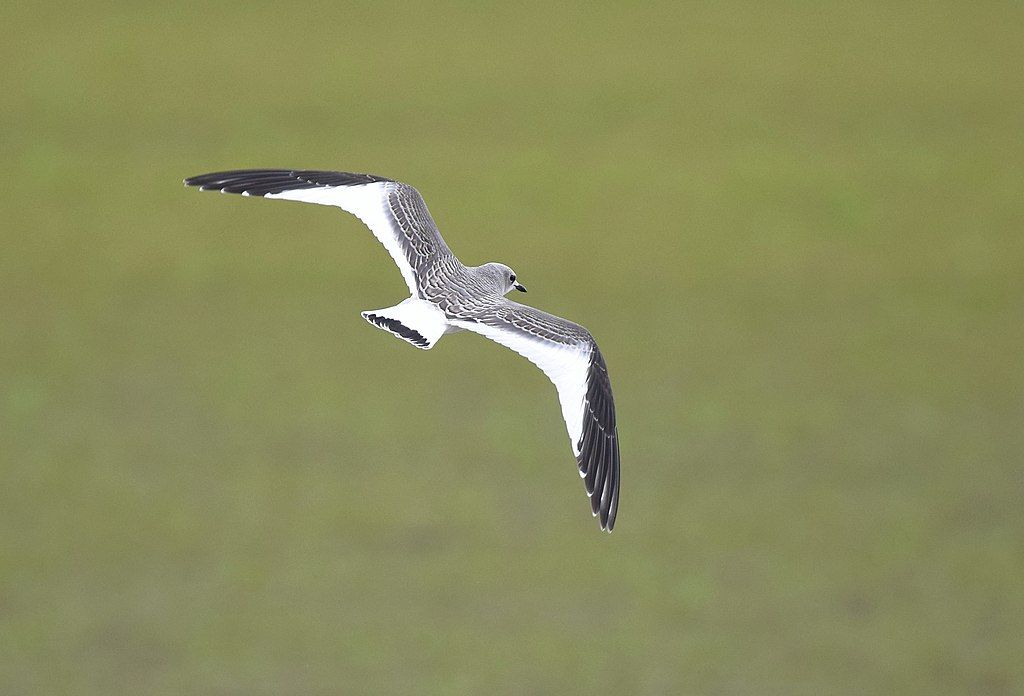
SECOND THOUGHTS: It can’t be a rare bird! It has to be a Bonaparte’s. However, immature Bonaparte’s (Chroicocephalus philadelphia) with a black M on the wings also have a black tailing edge and no white triangle. Except for the tail there are no crisp edges on an immature Bonaparte’s back.
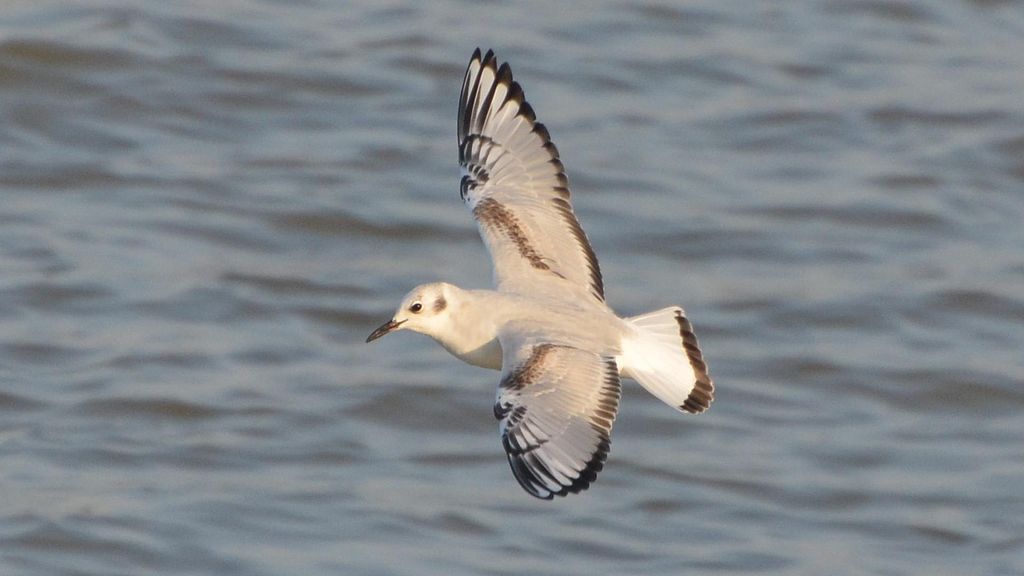
THIRD THOUGHTS: In KX Emm‘s field guide the Bonaparte’s and Little gull were side by side. We considered one of the illustrations as a possibility. It turned out to be an immature little gull (Hydrocoloeus minutus), also a rare bird. Immature little gulls have a white trailing edge but the pattern is not crisp and the white triangle is not stark.
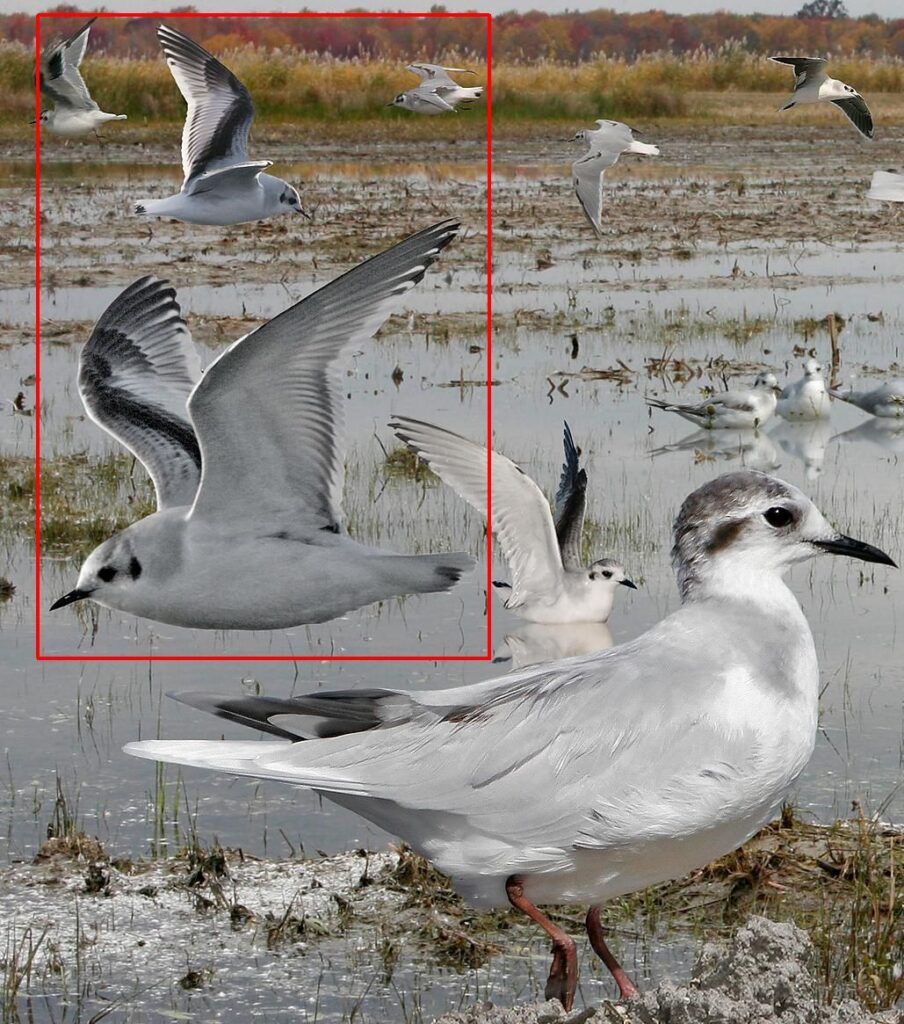
FOURTH THOUGHT: As long as we’re considering rarities an immature black-legged kittiwake (Rissa tridactyla) fits the bill, too. It’s very similar but more rare in western PA than the Sabine’s. I did not notice a black collar on the bird we saw.
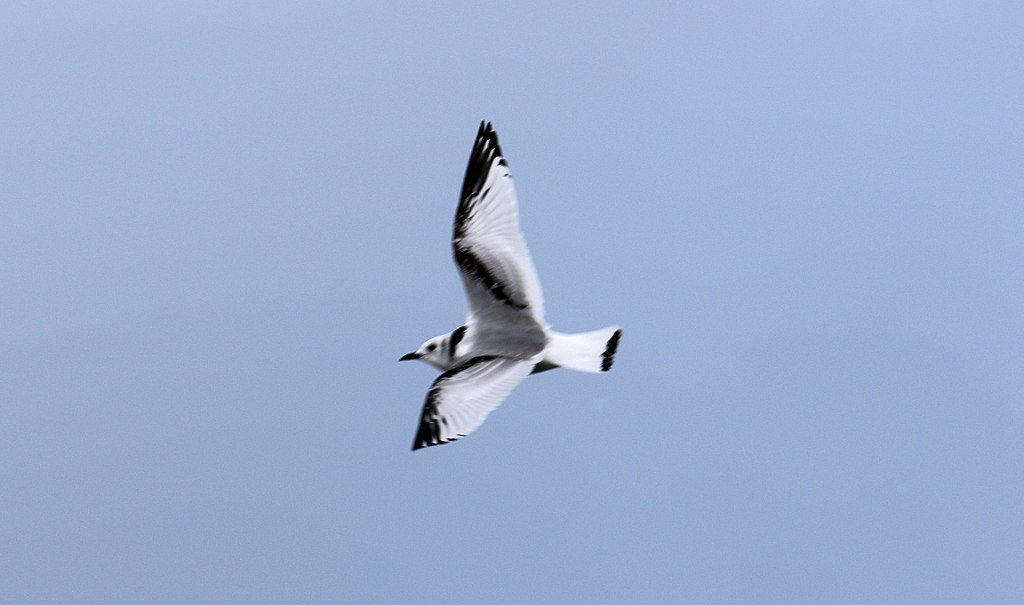
A NOTE ABOUT NOTICING: All immature gulls described above have black tips on their tails but I did not notice a black tail tip. I was too busy looking at the wings. Noticing is what makes this difficult.
So what did we see on Halloween?
I am very cautious about reporting rare birds but I have finally reported this one as a Sabine’s gull. What do you think?
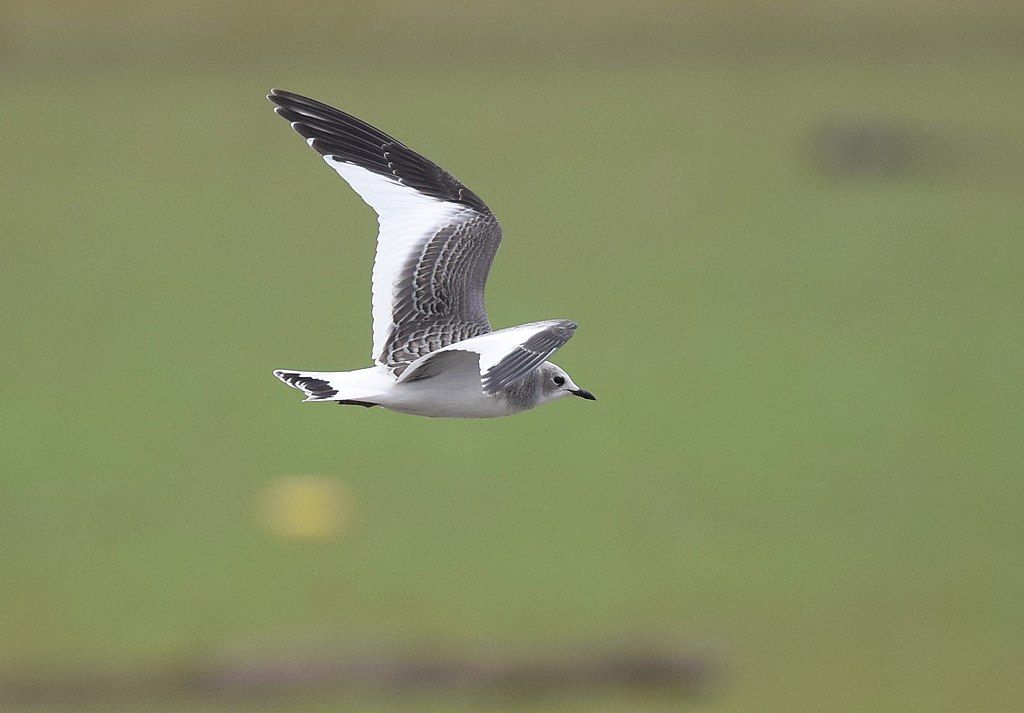
(Duck Hollow photo by Kate St. John. All bird photos from Wikimedia Commons; click on the captions to see the originals)
Probably not related, but I was at the Pitt game on 10/30 and there was a flock of what I’m guessing were some type of gulls that kept flying around the stadium. Being visually impaired, I couldn’t see them very well even with my binoculars but they appeared to be dark gray/black and white.